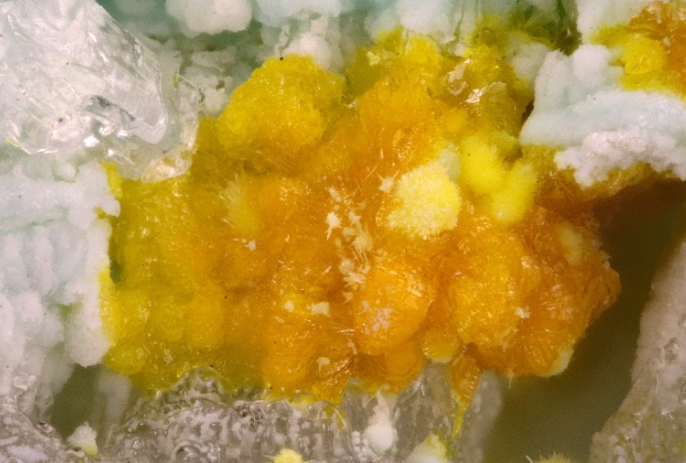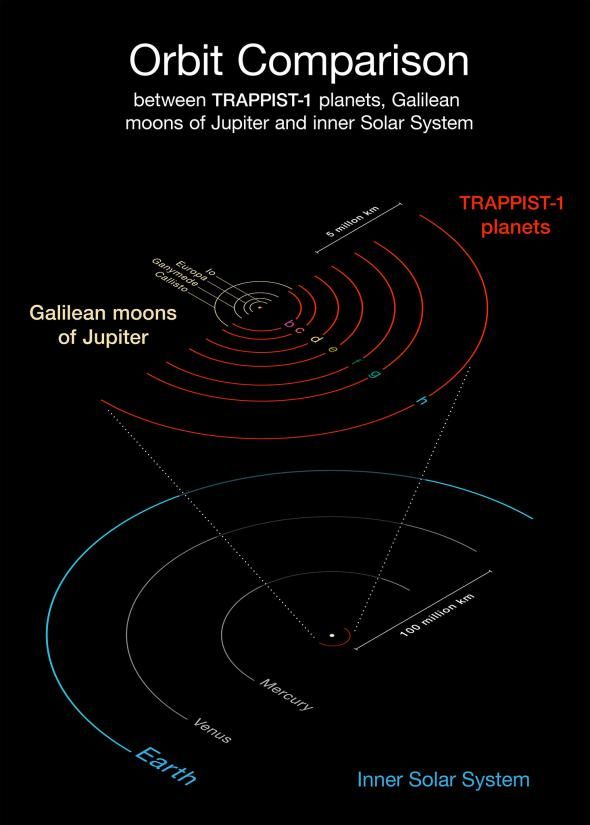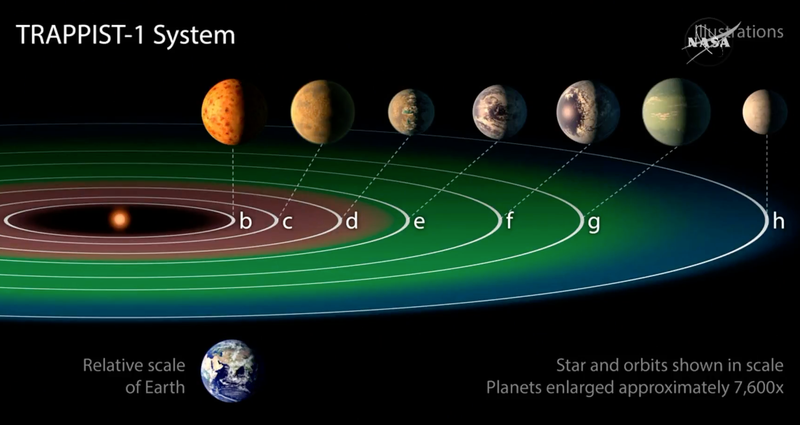Science, it definitely still works bitches.
-
The hologram theory actually comes from the Black Hole information Paradox, which takes the quantum view and assumes physical information can't be lost.Blue Swirl wrote:As for "is reality maths?", I think that's the basis behind the "the universe is just a hologram" hypothesis.
The general idea is that matter disappears inside a black whole, and that matter obviously takes all the information about itself with it (it's quantum state). This is fine. The information is obscured but there. Then Hawking proposed that black holes eventually evaporate completely through virtual particle radiation, which has no relation to the stuff inside, and so the information about the matter inside would be lost. Then there was a theory that the 2D surface of the black hole (the event horizon) could contain all the information after all about the 3D (volume), the hidden stuff inside, and there was some supportive maths, but then everyone got confused and someone mentioned Hawking might be wrong, and I think there was a fight in a bar in Russia, and then someone pointed out Einstien was a buffoon, and it all got a bit messy from there on in. Apparently someone said they'd solved the paradox, but I think they were drunk and couldn't quite remember it in the morning. Usual physicist stuff. -
Yossarian wrote:
This makes zero sense to me.
You're not reducing enough, and that's bad science. Cut out the middleman and you've got only maths.I see it mostly as the distinction between a representation/description and the thing itself.
The mathematical description IS the thing. A surplus, mysterious "thing" isn't required. -
Am I missing something here? Surely a mathematical description, by definition, describes a thing. If there is no thing, there is no mathematical description. The thing isn't surplus, in many cases it's not even mysterious (maths can tell us how the atoms that make up a brick are staying together, but bricks hold no mystery).
-
That's easily done seeing as your house has evidently been built entirely out of mathematical descriptions.
-
What's a brick? A thing made of atoms. What's an atom? A thing made out of particles. What's a particle? A packet of energy. What's energy? An abstract idea, or more exactly, a number. So you see now.
-
I was with you up until:
SpaceGazelle wrote:What's energy? An abstract idea, or more exactly, a number. -
Look, i don't need to understand the magic that goes in to making a cake for it be fucking delicious.
-
Show networks
- Fuck Mugtome
- BlueSwirl
- Xbox
- Blue5wirl
- PSN
- BlueSwirl
- Steam
- BlueSwirl
- Wii
- 3DS: 0602-6557-8477, Wii U: BlueSwirl
Send messageVolcano pr0n? Volcano pr0n!
For those with an open mind, wonders always await! - Kilton (monster enthusiast) -
A new study has added weight to the idea that microbes can survive in the harsh conditions on Mars.
The Red Planet may appear to be little more than a barren, lifeless desert, but according to a team of astrobiologists at the University of Arkansas, microorganisms known as methanogens may have what it takes to eke out an existence there.
The study involved growing microbes in a liquid solution that was intended to represent the fluid believed to exist just beneath the planet's surface. The microbes were exposed to freezing cold temperatures and low atmospheric pressures to simulate the actual conditions on Mars.
Impressively, several of the samples were found to have survived for up to 21 days.
So could there really be microbes living on Mars right now ? It's certainly possible, especially given the unexpected detection of methane in its atmosphere which has yet to be fully explained.
"On Earth, most methane is produced biologically by past or present organisms," said study lead author Rebecca Mickol. "The same could possibly be true for Mars."
"Of course, there are a lot of possible alternatives to the methane on Mars and it is still considered controversial. But that just adds to the excitement."
source: tech times -
Scientists are keen to launch a mission to Venus to investigate mysterious dark streaks in its clouds.
With its extreme surface temperature and crushing atmospheric pressure, Venus might seem like the last place to look for extraterrestrial life within our own solar system.
A series of mysterious dark streaks observed in the planet's atmosphere however, which some scientists believe could be evidence of microbial organisms, could be set to change all that.
Both Russia and the US are hoping to join forces to launch a new exploratory mission to Venus to help unlock the secrets of this mysterious world as well as to investigate the possibility that these peculiar dark streaks are home to the first known examples of extraterrestrial life.
Such a mission is likely to include an orbiter and a lander and could launch by 2025.
"I cannot say that there is microbial life in Venus' clouds," said atmospheric scientist Sanjay Limaye from the University of Wisconsin. "But that doesn't mean it's not there either."
"The only way to learn is to go there and sample the atmosphere."
Source: phys.org -
Show networks
- Fuck Mugtome
- BlueSwirl
- Xbox
- Blue5wirl
- PSN
- BlueSwirl
- Steam
- BlueSwirl
- Wii
- 3DS: 0602-6557-8477, Wii U: BlueSwirl
Send messageI knew a girl from uni who ended up studying microbes under Martian conditions, her conclusions were much the same.For those with an open mind, wonders always await! - Kilton (monster enthusiast) -
Scientists have succeeded in squeezing hydrogen to such an extreme that is has turned in to a metal.
The remarkable breakthrough was made by two researchers at Harvard University who used diamonds to squeeze a hydrogen sample to pressures greater than those at the Earth's core.
It's a result that was predicted over 80 years ago by Eugene Wigner and Hillard Bell Huntington, two scientists who determined that at sufficient enough pressures it was possible to turn hydrogen in to a metal - something that was impossible to prove at the time.
"If this experiment is reproducible, it solves experimentally one of the major outstanding problems in all of physics," said Jeffrey McMahon from Washington State University.
The scientists behind the achievement now predict that metallic hydrogen, once created, may actually remain in either a solid or liquid state even at normal temperatures and pressures.
It is so dense in fact that it could even prove to be an effective replacement for rocket fuel.
Source: New Scientist -
Wow, I heard this was close a few weeks back, amazed they've published now though, wonder how they can control the burn though, could make fuel cells and batteries tiny"I spent years thinking Yorke was legit Downs-ish disabled and could only achieve lucidity through song" - Mr B
-
What defines a metal? Being solid & having +ions or something?
-
The world's most toxic countries laid bare on this alarming map
The maps show that Middle-Eastern oil-rich countries dominate the top ten spaces on the list. Saudi Arabia is recorded as being the most toxic, with the highest recorded air pollution on the list. The UK ranks 81st for toxicity, behind countries such as Germany and the United States, however, it is listed as having the 37th highest carbon dioxide emissions.
The 20 most toxic countries
1. Saudi Arabia
2. Kuwait
3. Qatar
4.Bahrain
5.United Arab Emirates
6.Oman
7.Turkmenistan
8.Libya
9.Kazakhstan
10.Trinidad and Tobago
11.Islamic Rep of Iran
12.Luxembourg
13.Bulgaria
14.Bosnia and Herzegovenia
15.Mongolia
16.Korea
17.FYR of Macedonia
18.Singapore
19.Iraq
20.China
Source: Wired -
Three New Uranium-Based Minerals Discovered in Utah
A Notre Dame graduate student recently found three new minerals while exploring old uranium mines in Utah. The three new minerals, leesite, leószilárdite and redcanyonite, are all new compounds of uranium and other components, allowing researchers to study how different forms of uranium can propagate in the natural environment.
During the height of the Cold War in the early 1950's, uranium mining become a boom industry for Utah. Salt Lake City was known as the "Wall Street of Uranium Stocks," and the state's then-notoriously lax financial securities laws allowed for exploration companies to explode in the town while many never produced a single ounce of uranium.
Uranium mining in Utah dried up in the mid-70's, but the mines persist, providing the necessary conditions for these three new minerals to form. "Have you ever seen The Hills Have Eyes? It's that kind of creepy, barren desert landscape," says Travis Olds, the graduate student at Notre Dame studying uranyl mineral compounds.
Leesite, one of the minerals Olds has found, is like uranium rust. It appears as tiny, bright yellow blades or needles. On an atomic level, leesite piles up in stacks of uranium and oxide layers, and its composition includes potassium, distinguishing it as an entirely new mineral.

[ul][li] [/li][/ul]
Leesite
Travis Olds
Leószilárdite is a pale yellow. "If you look at leószilárdite in a picture, you can kind of pick out that they have an unusual shape," Olds says. "But put them under the SEM (scanning electron microscope) and it's obvious." The mineral is formed when uranium ore interacts with oxygen, so there's a solid chance that the uranium mining industries only increased the amount of leószilárdite that exists in the world.

[ul][li] [/li][/ul]
Leószilárdite
Travis Olds
It's more common than the third mineral discovered, redcanyonite, which is believed to be the rarest of minerals that Olds found. What makes it so scarce is all the specific requirements for growth. Access to manganese ions is necessary, and redcanyonite can only form in organic-rich layers that produce ammonium.

[ul][li] [/li][/ul]
Redcanyonite
Travis Olds
"The only way to better understand the chemistry of uranium is to go out and find new minerals—and describe their topology, their structures," Olds says. "They teach us a lot about how uranium can then be moved in the environment."
Source: Michigan Tech -
Oooh, Royal Institute has a video portal thingy: http://www.richannel.org/
and a channel on youtube: https://www.youtube.com/channel/UCYeF244yNGuFefuFKqxIAXw -
Oooh, so magenta isn't real, it's your brain saying "not-green"!
-
Cool.Come with g if you want to live...
-
Interesting...
February 19, 2017 - Are Spikes in Iodine-131 Levels in Europe from
Arctic “Nuclear Incident” in January 2017?
“Where the radioactivity is coming from is still a mystery. ... Someone out there
knows why the radioactivity was spread over large areas of Europe.”
- Barents Observer, February 19, 2017

February 13, 2017 Map Source: Institut de Radioprotection et de Surete Nucleaire.
ZeroHedge.com is reporting today that recently “trace amounts of radioactive Iodine-131 of unknown origin were detected in January 2017, over large areas in Europe (see above map). Since the isotope has a half-life of only 8 days, the detection is an indication of a rather recent release. As the Barents Observer adds, 'where the radioactivity is coming from is still a mystery.'” An “Arctic nuclear incident” has been rumored, but no details provided to date.
Norway's air filter station at Svanhovd near Russia's Kola Peninsula was first to measure an Iodine-131 spike at Finnmark in the second week of January 2017. Then within the next two weeks, Iodine-131 spikes were reported in Rovaniemi (Finnish Lapland), Poland, Czech Republic, Germany, France and Spain. There are no human health concerns at the levels measured, but the so far unanswered question is: Where did the radioactive Iodine-131 come from — and why? -
http://www.bbc.co.uk/news/science-environment-39034050
Wow, 7 yep 7 earth sized planets orbiting a distant star. 3 of the 7 within the habitable zone as defined by our solar system.
I wonder if in my lifetime we'll ever get the disclosure that our galaxy is teeming with sentient life. Probably not.



-
I have high hopes for domestic beers from the Trappist systemail.
Howdy, Stranger!
It looks like you're new here. If you want to get involved, click one of these buttons!
Categories
- All Discussions2,717
- Games1,880
- Off topic837










